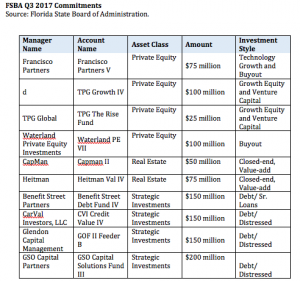Hedge funds continue to play a role in institutional investment portfolios, despite the bad rap the industry has endured over the past few years. Various foundations and endowments served as panelists and shared their perspectives on how they incorporate hedge funds within their overall investment framework, their manager expectations, and opportunities going forward at Agecroft’s Hedge Fund Investor Leadership Summit held in New York November 2- 3.
“We eliminated the term ‘hedge fund’ from the [investment] policy and we took it out of every document that we had, partly because of the negative trust/bias that’s seen,” said Jonathan Hook, CIO of the $2.3 billion Harry and Jeanette Weinberg Foundation, on a panel discussion. “We really think about hedge funds not as an asset class, but trying to get specific exposures into the portfolio and not trying to fill up buckets.”
Conversely, the $1.3 billion UJA-Federation of New York has about a 35% allocation to the asset class, according to CIO Colin Ambrose. “We’re looking at [hedge funds] from an opportunistic perspective, we’re trying to get uncorrelated return streams.” The fund focuses on managers who can generate alpha, where shorting positions tends to play a large role in achieving its goals.
In lieu of a more traditional asset allocation strategy, Verger Capital Management allocates its portfolio through 25 risk factors, which include duration, liquidity, momentum, and growth. “We try to find hedge funds that can do things for us that are unique to our asset allocation model,” said Jim Dunn, CEO and CIO of Verger, which, among other names, manages Wake Forest’s $700 million endowment.
Manager Traits
Outside of fees, panelists expressed the importance of building long-term relationships with their hedge fund managers and partnering with firms that are not simply looking to accumulate assets. Other traits panelists sought in their hedge fund managers included:
- Transparency/communication
- Consistency
- Alignment of interest
- Flexibility
- Diversity
“We’re looking for managers that [do not have] the same look, or feel, or thought process,” asserted Dunn. “We’re trying to carve out from our portfolio different perspectives. A different way of thinking about the market.”
Hook agreed. “There’s a lot of clutter out there, so how you distinguish yourself as a firm, when you’re coming to talk to potential LPs, is an important thing to do,” he said.
Hook also expressed the importance of keeping the manager count down. “There’s a lot of folks in the E&F community who are guilty of proliferation in the number of managers. … We’ve got 38 today, and we’ll probably keep the number in the 40s.”
The plan prefers larger allocations with each of its managers. “So, that also entails us thinking about the role each manager is playing, because we’re not just adding a little bit of everything across the board,” he said.
Industry Outlook
The surge in pricing and demand for crypto-currencies, the wave of big data infiltrating the industry, and how portfolio managers utilize data sets were areas of focus cited by some of the panelists.
Further, the increasing presence of firms such as Amazon and understanding the potential portfolio implications is something Hook will keep an eye out for. “Not today, but go two or three iterations out, does Amazon eat all of corporate America? … There’s probably a bigger chance of a few firms really dominating in ways we haven’t seen industries get dominated,” he said.
For Verger, climate change and how it has disrupted the market is an area the fund keenly monitors. Dunn argued that climate change will have implications across asset classes and not just in environmental, social, and governance (ESG)- oriented portfolios. Sharing the example of autonomous vehicles, Dunn questioned how such technology might impact areas within infrastructure and the insurance industry.
Other funds, such as the Episcopalian NY Diocesan Investment Trust, are exploring opportunities with a geographic focus rather on a specific sector or strategy.. “We are little north of where we should be in our investment policy guidelines for global large-cap equities. … So, we’re slowly decamping from US-equity-focused hedge fund managers and pushing more money to Asia, Japan, China, because we can change the exposure without messing [with] policy guidelines,” John Trammell, president of the trust, said.
Tags: Agecroft Partners, Hedge Fund Investor Leadership Summit, Hedge Funds



